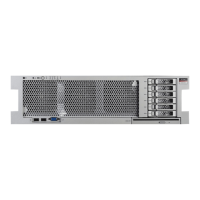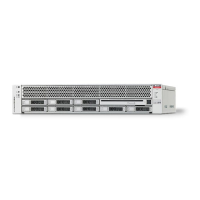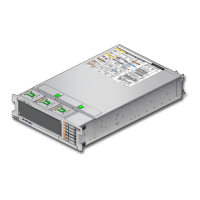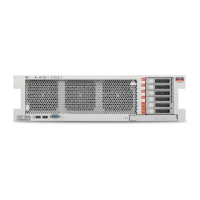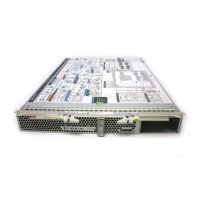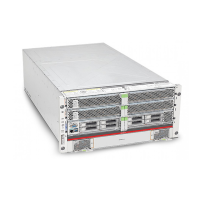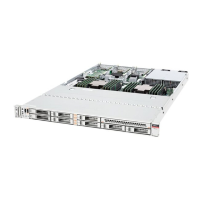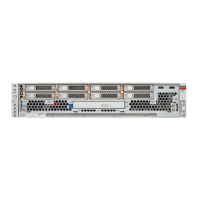Interpreting Log Files and System Messages
Detecting and Managing Faults 41
■
If no fault is reported, you do not need to do anything else. Do not perform
the subsequent steps.
■
If a fault is reported, continue to Step 3.
3.
Clear the fault from all persistent fault records.
In some cases, even though the fault is cleared, some persistent fault information remains
and results in erroneous fault messages at boot time. To ensure that these messages are not
displayed, type this PSH command:
faultmgmtsp> fmadm acquit UUID
4.
If required, reset the server.
In some cases, the output of the fmadm faulty command might include this message for the
faulty component:
faulted and taken out of service
If this message appears in the output, you must reset the server after you manually repair the
fault.
faultmgmtsp> exit
-> reset /System
Are you sure you want to reset /System? y
Resetting /System ...
Related Information
■
“PSH Overview” on page 38
■
“Check for Faults” on page 38
Interpreting Log Files and System Messages
With the OS running on the server, you have the full complement of Oracle Solaris OS files and
commands available for collecting information and for troubleshooting.
If PSH does not indicate the source of a fault, check the message buffer and log files for
notifications for faults. Drive faults are usually captured by the Oracle Solaris message files.
These topics explain how to view the log files and system messages.
■
“Check the Message Buffer” on page 42
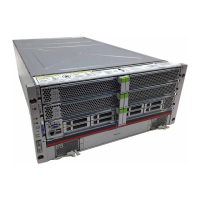
